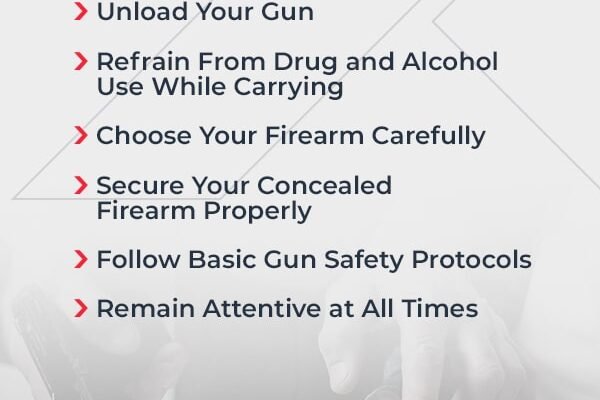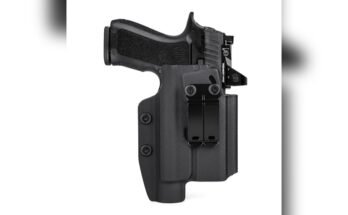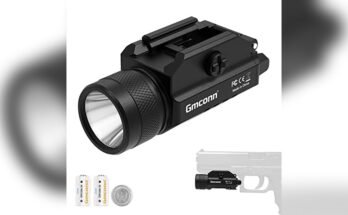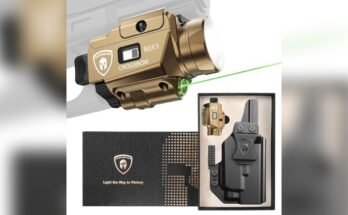I’ve spent years around responsible gun owners, training classes, and range days. I’ve seen smart people make small mistakes that could have ended badly. So, can a holster cause accidental discharge? The honest answer is yes, but not on its own. A holster can contribute to a discharge when design flaws, poor fit, foreign objects, or unsafe handling line up. In this guide, I’ll break down how it happens, what to look for, and how to carry with confidence. Let’s keep it simple, practical, and rooted in real-world experience.
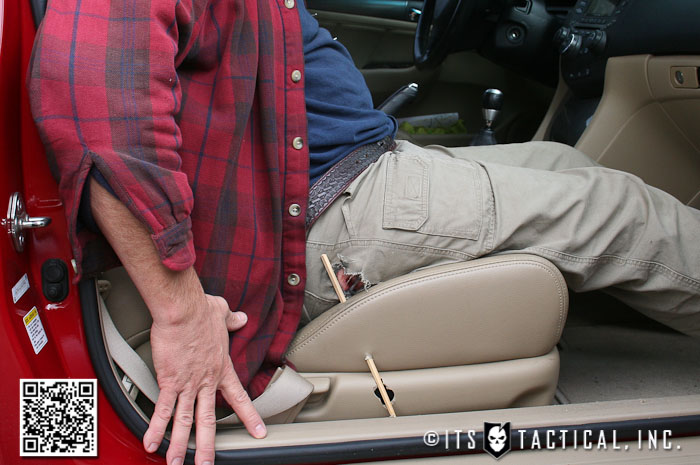
Source: www.itstactical.com
What Is An Accidental Discharge, Really?
Some people call any unexpected shot a malfunction. In practice, most “accidental” discharges are actually negligent discharges. That means the gun did what it was designed to do, but something pressed the trigger.
A true accidental discharge is rare and often tied to a mechanical failure. In the context of holsters, almost every case involves trigger activation due to poor holster design, improper use, or debris getting inside.
Key points:
- Guns fire when the trigger is pressed, not by magic.
- If the trigger is covered and protected, the risk drops fast.
- Good gear plus safe habits prevent most incidents.
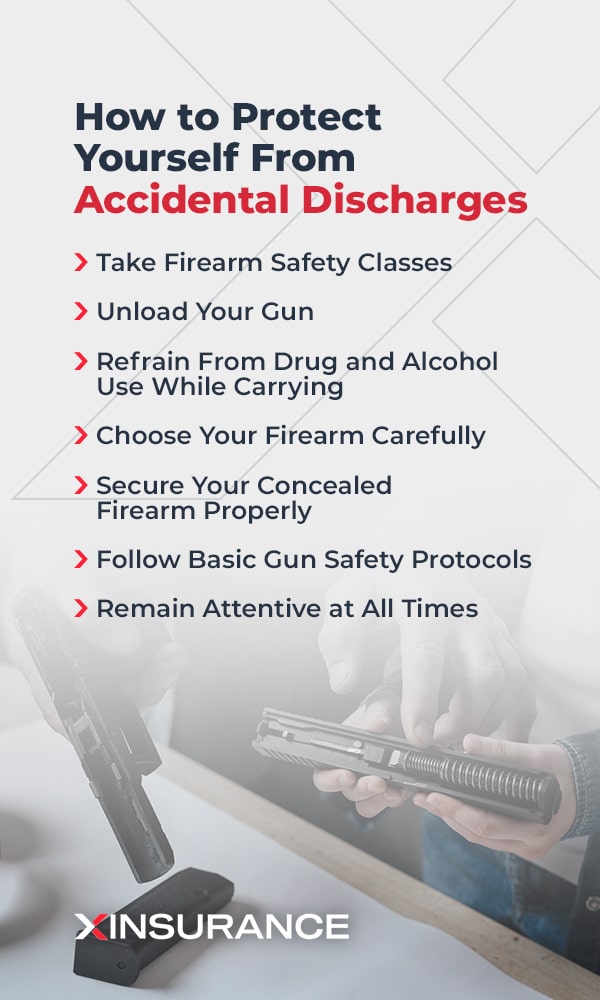
Source: www.xinsurance.com
How A Holster Can Contribute To A Discharge
A holster can play a role in a discharge when it allows something to press the trigger. Here are common scenarios seen in incident reports and training circles:
- Soft or collapsed holsters: Soft nylon or worn leather can fold into the trigger guard during reholstering.
- Poor fit: A holster made for a different model can leave the trigger exposed or let the gun shift, exposing the trigger.
- Foreign objects: Drawstrings, shirt hems, cords, or debris can slip into the trigger guard as you holster.
- Overly tight retention near the trigger: Some designs squeeze the trigger area, especially with off-spec replicas.
- Modifications: Lightened triggers or non-OEM parts can reduce safety margins if combined with tight holsters.
- Reholstering under stress: Fast or blind reholstering can push fabric or straps into the trigger.
From training observations, reholstering is the moment most likely to cause a problem. Slow down. Look the gun into the holster when safe to do so.
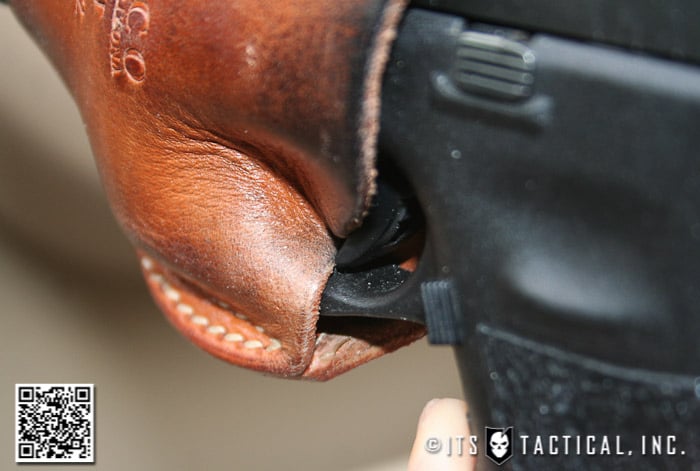
Source: www.itstactical.com
Holster Types And Their Risk Profiles
Every style has trade-offs. The goal is firm retention, full trigger coverage, and consistent draw.
- Kydex holsters: Rigid, hold shape, and cover the trigger well. Choose one molded for your exact model, with smooth edges and proper retention.
- Leather holsters: Comfortable and classic. Watch for wear. If it collapses or loses shape, replace it.
- Hybrid holsters: Kydex shell with a soft backer. Check for warping or backing intrusion near the trigger.
- Pocket holsters: Only safe if the pocket holds the holster alone. No keys, coins, or knives in there.
- Off-body holsters (bags, purses): Higher risk of debris and movement. Use dedicated compartments with full trigger coverage.
- Clip-only trigger guards: Minimalist setups demand strict discipline to keep fabric out of the trigger area.
Real-world note: I’ve retired leather holsters that developed a soft “lip” that tried to fold into the trigger guard. The replacement cost is cheaper than a hospital bill.
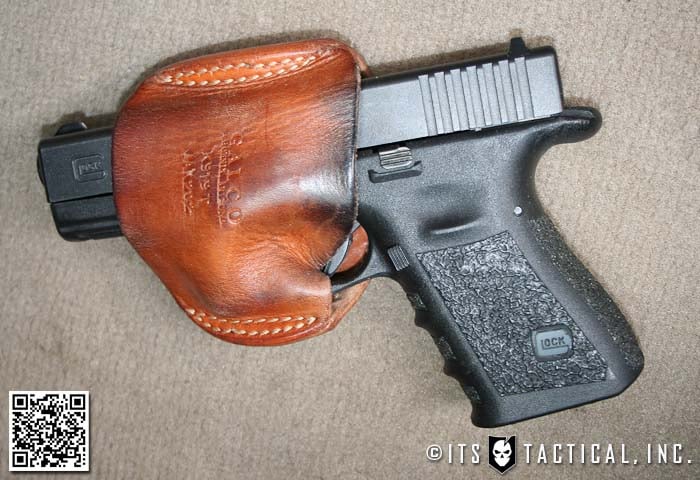
Source: www.itstactical.com
Design And Quality: What To Look For
A safe holster does three things: covers the trigger fully, holds the gun securely, and keeps its shape during use.
Check these features:
- Full trigger coverage: No gaps. No “almost.” Try pressing fabric around it. If you can reach the trigger, that’s a fail.
- Rigid mouth: The opening should not collapse when the gun is out.
- Model-specific molding: Exact fit reduces movement and trigger access.
- Adjustable retention: A gentle “click” or consistent hold that resists jostling but releases on a clean draw.
- Compatible with your setup: Lights, optics, and compensators need holsters designed for them.
- Clean edges and clearances: No sharp, thin points near the trigger.
- Quality attachments: Belt clips and loops should be sturdy and positioned for stable carry.
Routine test:
- Unload your firearm.
- Holster it slowly.
- Wiggle the gun. Try to press into the holster where the trigger sits. Nothing should flex into the guard.

Source: www.nrawomen.com
Safe Habits: Drawing, Reholstering, And Daily Carry
Good gear matters, but habits matter more. These rules have kept many people safe:
- Keep your finger high on the frame during draw and reholster.
- Clear cover garments fully. Watch out for cords, toggles, or long shirt hems.
- Reholster slowly. If you can, look the gun into the holster. If not, move slowly and deliberately.
- Never force a gun into a holster. If there’s resistance, stop and inspect.
- Avoid reholstering in tight spaces or cars without checking for seat belts, buckles, or clothing interference.
- Use a rigid belt or platform that keeps the holster stable.
Training tip: Build the habit dry first. Practice with an unloaded firearm or a training replica. Speed comes from smoothness, not rushing.

Source: www.forcescience.com
Maintenance, Fit, And Clothing Considerations
Most issues appear over time. Small changes add up.
- Inspect weekly: Look for cracks, warping, loose screws, or soft spots.
- Use thread locker on retention screws. Check torque monthly.
- Mind clothing: Avoid drawstrings and dangly cords near the holster zone. If you can’t avoid them, tuck or remove them.
- Keep the holster clean: Lint, dirt, and small stones can migrate into the trigger area. Wipe it out often.
- Replace when worn: Holsters are consumables. When in doubt, swap it out.
Personal note: After a sweaty summer, I found salt deposits stiffening a hybrid backer. The edge started to curl and press in. I cleaned it, but replaced it soon after. It was cheap insurance.
Legal, Policy, And Insurance Considerations
A discharge in public can bring legal trouble even if no one is hurt. Know your local laws and your organization’s policies.
- Understand carry laws: Some regions have strict rules about negligent discharges.
- Employer or range policies may dictate approved holster types.
- Consider self-defense insurance that covers accidents. Read the fine print on negligent discharge coverage.
- Document your gear and maintenance. Notes and photos help show due diligence if you ever need it.
What The Data And Experts Suggest
Industry testing and training reports point to a clear theme: blocked or exposed triggers cause most incidents, not spontaneous mechanical fire. Modern, drop-safe firearms paired with rigid, well-fitted holsters have very low accidental discharge risk.
Evidence-backed takeaways:
- Full trigger coverage is the single most important factor.
- Reholstering is the highest-risk moment in daily carry.
- Debris and clothing near the trigger guard are common culprits.
- Routine inspection and replacement prevent a long list of failures.
Lessons From The Range: Personal Insights
I’ve stopped more than one student mid-reholster when I saw a jacket cord dip toward the trigger area. It takes one second to pause and clear the path. That one second removes most of the risk.
A few habits that stuck with me:
- If something feels off, stop. Don’t fight the holster.
- I audit my carry setup at the start of each season. Winter coats, summer shirts, and gym wear all change how fabric moves.
- I only buy holsters from makers who state model-specific fit and support my accessories.
The big lesson: a holster is a safety device first, a convenience second. Treat it that way, and your odds of a discharge stay near zero.
Frequently Asked Questions Of Can a Holster Cause Accidental Discharge?
Can A Holster Alone Fire A Gun?
No. A modern firearm fires when the trigger is pressed. A holster can contribute to a discharge if it allows pressure on the trigger, but it cannot fire a gun by itself.
Are Soft Holsters Unsafe?
Not always, but soft holsters can collapse or fold into the trigger guard, especially when worn or cheap. Many trainers prefer rigid holsters that keep their shape during reholstering.
What’s The Safest Way To Reholster?
Go slow. Clear clothing. Keep your finger high on the frame. If possible, look the gun into the holster. Stop if you feel resistance, remove the gun, and inspect.
Do Trigger Shoes Or Lightened Triggers Increase Risk?
They can. Reducing trigger weight or adding parts can lower the margin of safety, especially with tight holsters. If you modify the trigger, use a holster designed for your setup and be extra careful.
How Often Should I Replace My Holster?
Replace it when you see cracks, soft spots, loose hardware that won’t hold tension, or any change that lets fabric reach the trigger. Many people review gear every 12 months and after heavy use or seasonal changes.
Is Pocket Carry Safe With A Holster?
Yes, if the holster fully covers the trigger and the pocket holds nothing else. No keys, coins, or other items should share that pocket.
Final Thoughts And Next Steps
Can a holster cause accidental discharge? It can contribute, but solid gear and smart habits make the risk very low. Cover the trigger, choose a rigid, model-specific holster, and slow down when reholstering. Small checks today prevent big problems tomorrow.
Make a quick plan: inspect your holster, clear risky clothing features, and practice a slow reholster drill. If this helped, explore more guides, subscribe for updates, or drop a question so we can keep the conversation going.
Watch This Video on Can a holster cause accidental discharge?
